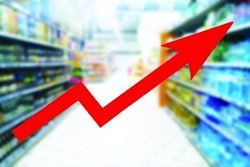
Toward the end of each year, lists of trends to watch for in the coming year start to pop up, and that’s certainly true with pet food. Yet the start of the new year is also a good time to consider the trends that may help shape the year ahead for your business and your industry.
And for that, we in pet food often look to human food. Following are five trends in the food and beverage industry that Emergent, a marketing agency focused on healthy living, believes are key for 2024:
1. Less processed — for pet food, this typically translates to formats other than traditional kibble or canned. Think fresh, frozen, freeze-dried, “gently cooked” and the like. “Consumers do not believe that ultra-processed is a positive attribute,” wrote Emergent in its report, “2024 Trend Forecast: Consumers Seek Truth Amplified by Transparency.” While the statement refers to consumers’ own food, for a growing number, it extends to their pets’ fare, too.
2. Upcycled — this ingredient category has been having a moment in pet food, whether in “ugly” ingredients being incorporated into pet treats, grocery waste being converted into a nutrient-rich pet food ingredient or even traditional meat byproducts being rendered into pet food proteins. (In the latter case, the “moment” stretches back decades!) Interest is growing in human food, too, according to Emergent, who adds that the category provides a “great story to tell in product creation narratives.”
3. Sustainable — not at all new for pet food or human food, but attitudes are shifting as consumers gain knowledge and understanding of the environmental impact of the food system, Emergent says. That extends to the pet food system, too. “Consumers have connected the dots between supply chain and emissions performance,” the report says. “They want to know what brands and retailers are doing to advance policies and standards related to regenerative agriculture and use of less-intensive ingredients.”
4. Nutritional density — this boils down to “products that provide functional ingredients designed to enhance delivery of vitamins, minerals, proteins without added sugars, the wrong kinds of fats and high sodium content.” While that’s a human-focused list from Emergent, one for pet food would read similarly. And in a time of high pet food inflation, for pet owners, this concept might also mean nutritional value for the money.
5. Energy reduction plays— this is a close cousin to sustainability; but interestingly for pet food, it might also contradict some of the formats mentioned in the first trend (less processed). Emergent is talking about refrigerated human foods and how a hidden cost related to energy may offset a perception of those being fresher and of higher quality; with fresh (often refrigerated) and frozen pet food, that energy cost may offset the perceived benefits of less processing. Which is why any assessment of energy use, carbon emissions or similar sustainability metrics must account for the entire supply chain. (Not an easy thing for companies to do or for consumers to know or understand.)
Emergent also includes a sixth trend for human food, disguising fruits and vegetables.
Call for brands and marketers: Explain everything
As the title of its report spells out, the main point of Emergent’s message is that in an age of uncertainty and anxiety, consumers seek truth and transparency from the brands they engage with and buy. “The overriding theme and guidance for the coming year is an advancing consumer interest in securing more details about how products are created, manufactured and what’s inside them,” the report says. Or, put more succinctly: Consumer brands have lots of explaining to do.


















